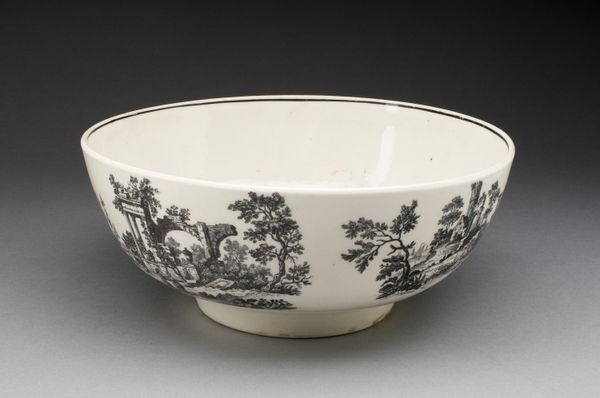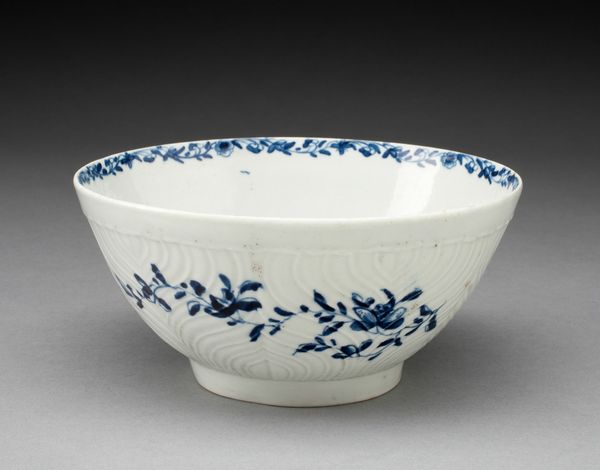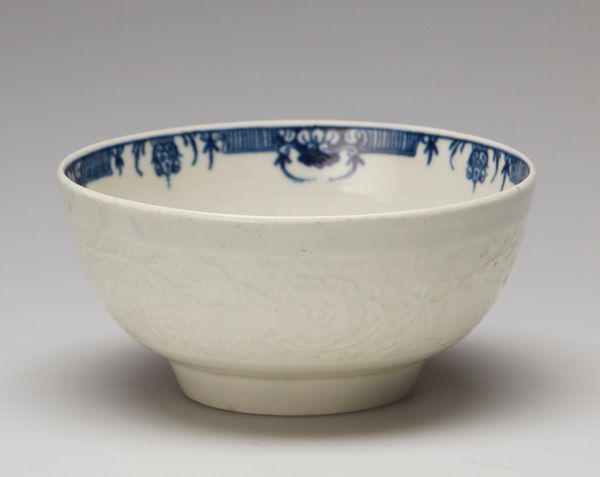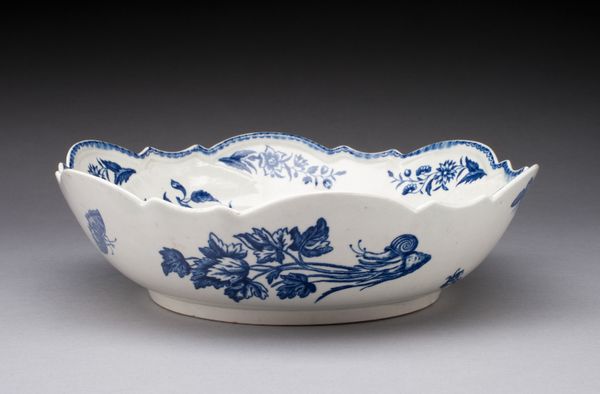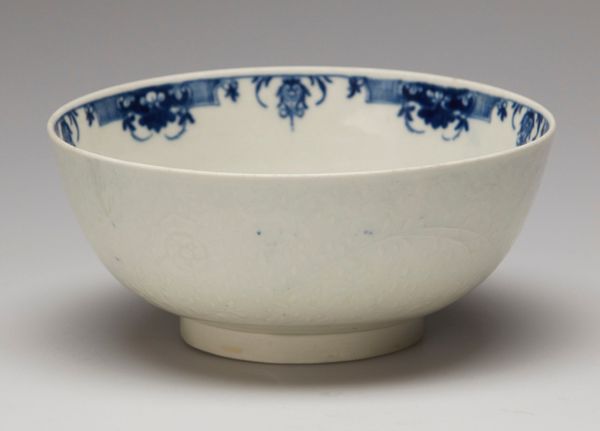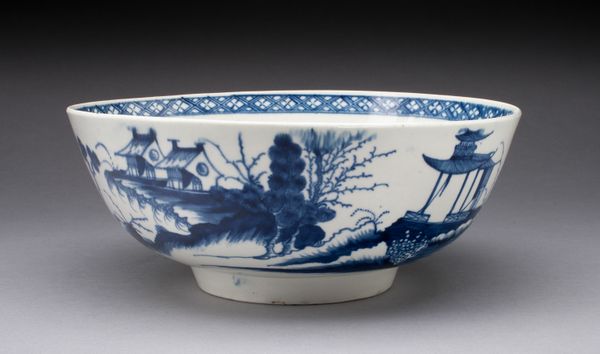
Dimensions: 16.8 × 8.3 cm (6 5/8 × 3 1/4 in.)
Copyright: Public Domain
Editor: Here we have a ceramic bowl made around 1775 by the Worcester Royal Porcelain Company. It's surprisingly delicate. What can you tell us about it? Curator: The bowl embodies a fascinating moment in the history of labor and materiality. Porcelain production in the 18th century was a highly specialized, labor-intensive industry. Think about the sourcing of materials like kaolin and petuntse, the division of labor within the factory – some skilled artisans, others performing repetitive tasks. Editor: So, it's not just a pretty bowl, but a product of specific economic and social conditions? Curator: Exactly. This object tells a story of global trade. The cobalt used for the blue decoration, for instance, likely came from distant sources, illustrating complex networks of exchange. Also, consider the cultural value placed on porcelain itself. What did it represent in terms of status and taste? Editor: It's interesting to think about the bowl as part of a bigger system, not just as a standalone object. How does the Rococo style fit into that? Curator: Rococo’s emphasis on ornamentation reflects a culture of luxury and conspicuous consumption. It's a visual language tied to specific class aspirations and demonstrates an embrace of the ornate in everyday life through porcelain's mass appeal to wealthy consumers. Editor: I hadn't considered the global aspect of something that seems so simple. Curator: Precisely. Objects like this were part of vast circuits of production, consumption, and meaning. By focusing on those circuits, we can see art history in a richer, more connected way. Editor: I’ll never look at porcelain the same way again!
Comments
No comments
Be the first to comment and join the conversation on the ultimate creative platform.
